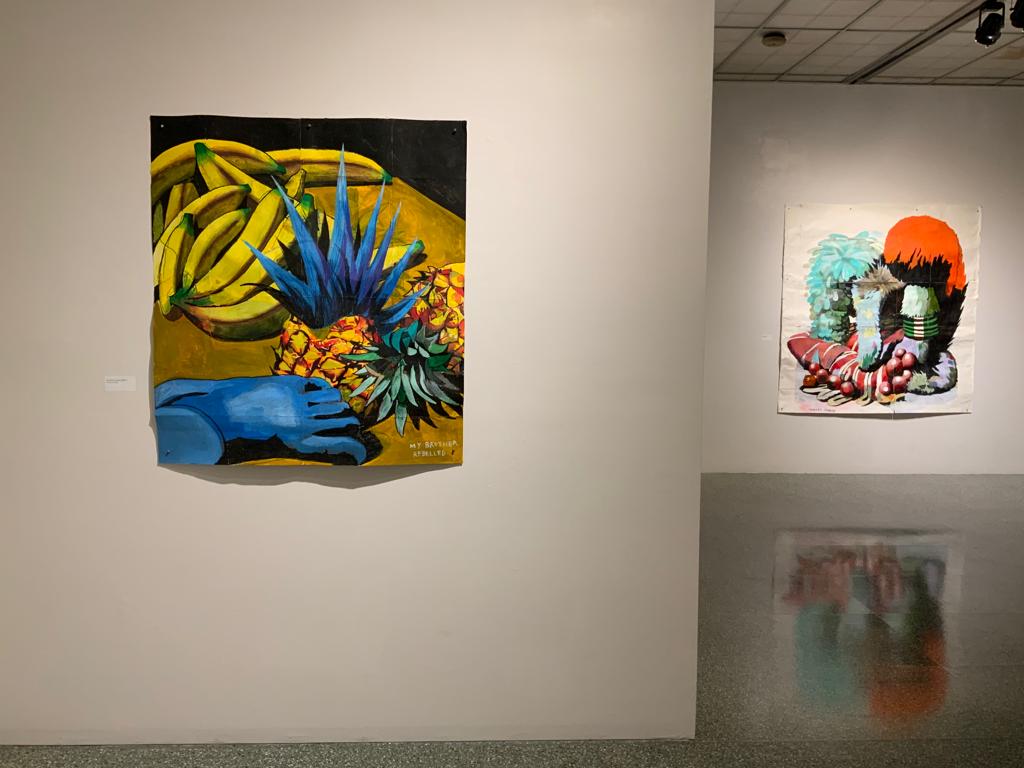
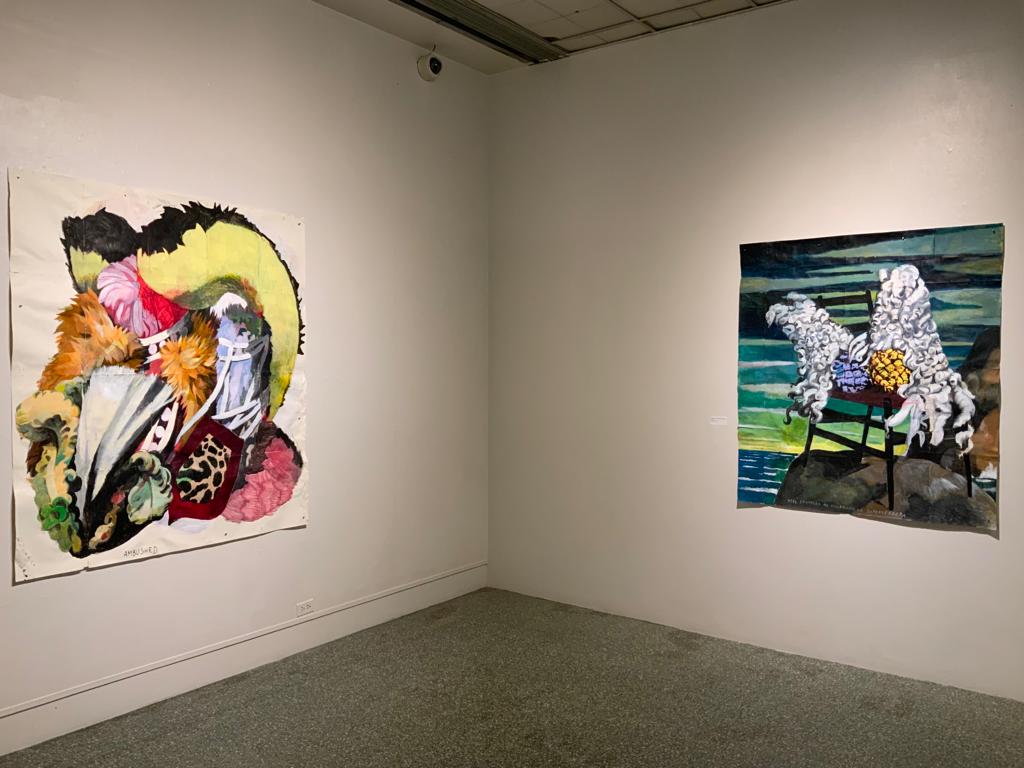
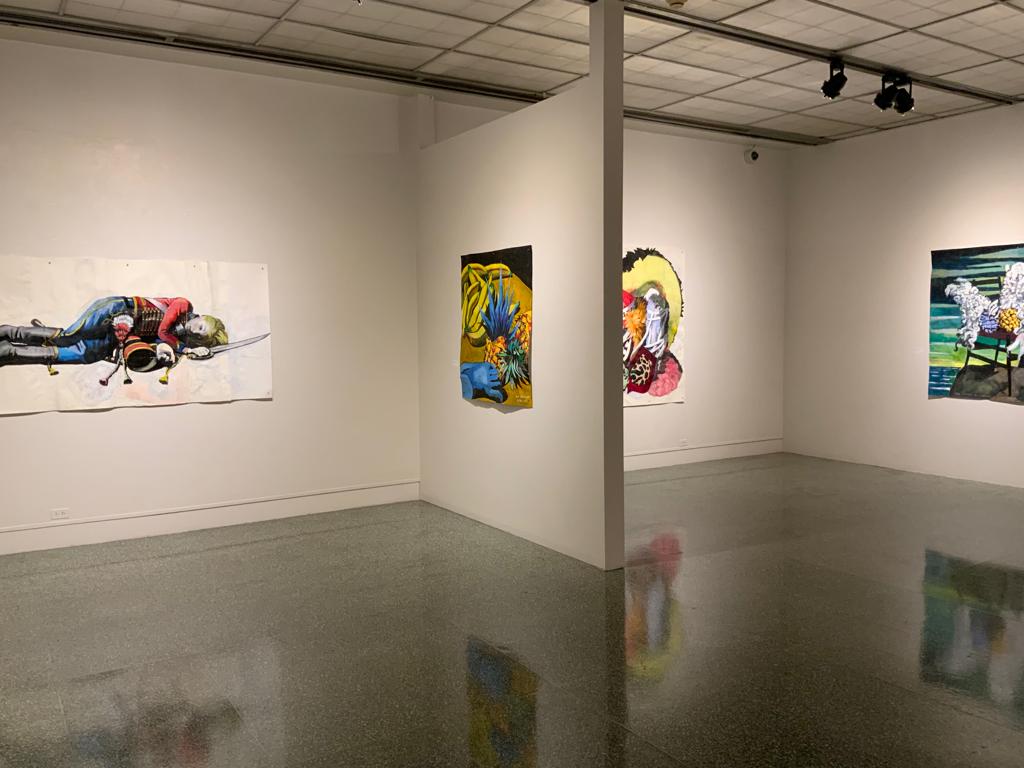
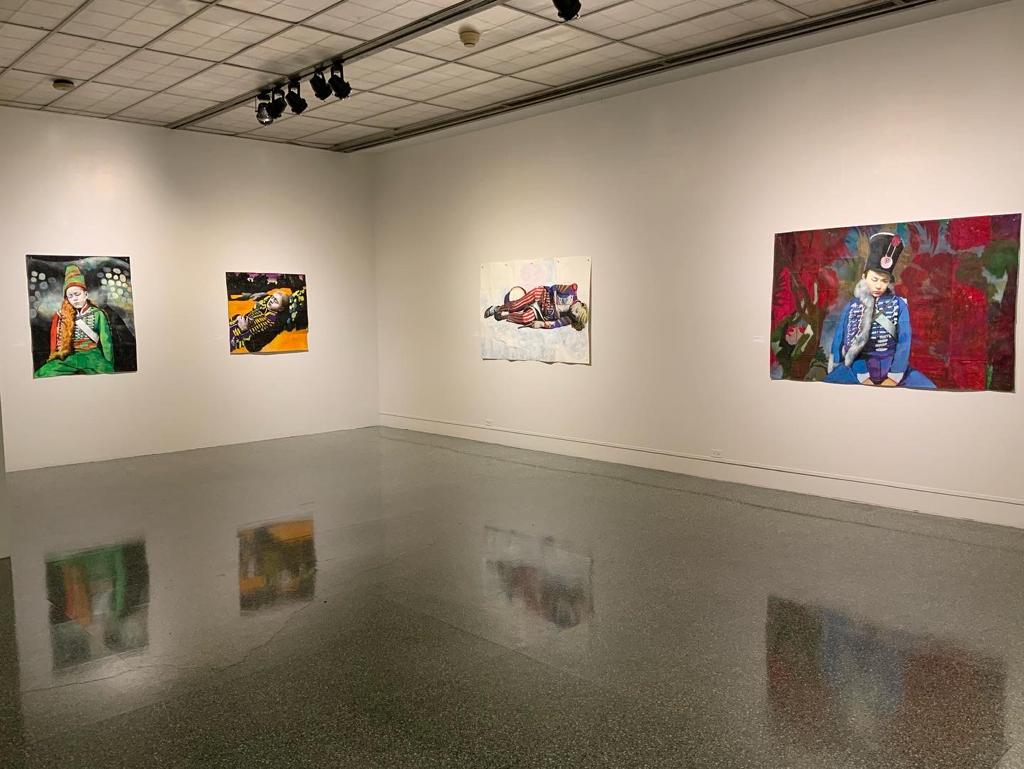

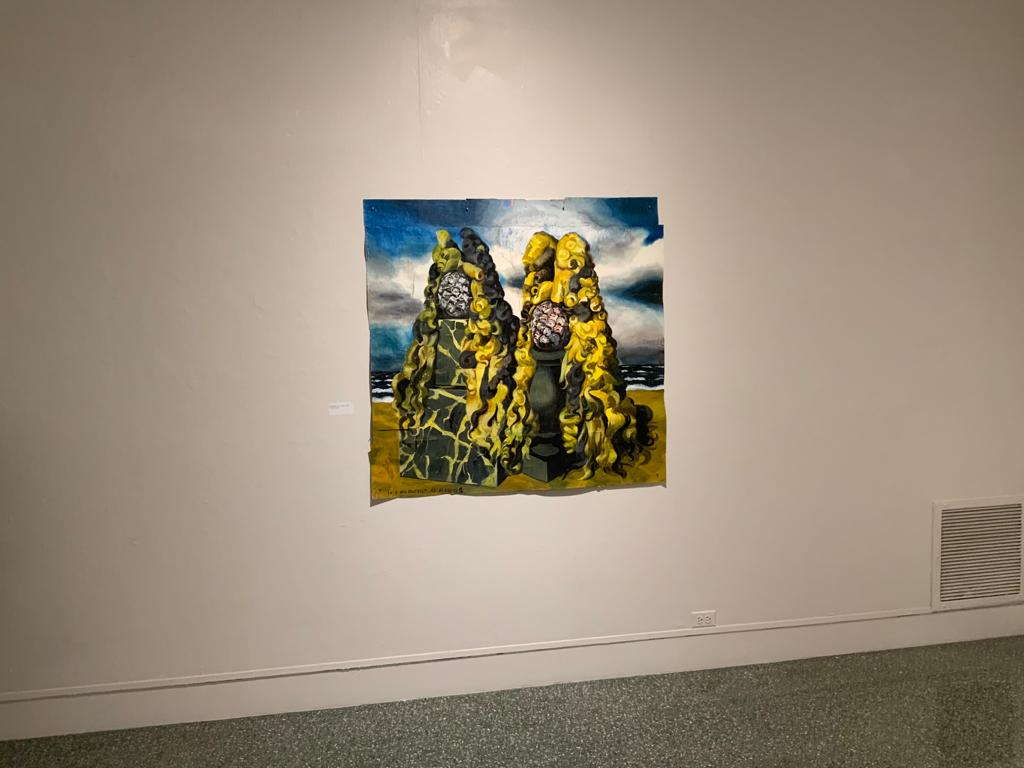
VANITAS. GRUNWALD GALLERY OF ART, ESKENAZI SCHOOL OF ART + DESIGN. INDIANA UNIVERSITY, BLOOMINGTON, INDIANA, 2022. CURATED BY BETSY STIRRATT AND TIM KENNEDY.
Sitting at our kitchen table, Jurriaan turned the newspaper in my direction and pointed to an illustration on the cover saying, “I know the guy that painted this”. It was a portrait of Ulysses S. Grant, the Civil War General and U.S. President, on the front page of The New York Times Book Review. Ron Chernow had recently published another of his table breaking, narrative biographies which was being reviewed in the Times. The portrait was a boldly painted and perhaps partly collaged work by an artist familiar with the Modernist language of abrupt plane shifts and gestural, painterly mark. I had noticed and admired the style of the illustrations by this artist, usually of literary and historical figures, in previous issues of the Times and other publications. I had noted the portraits’ uncanny psychological power. I suppose that I had seen the credit line of the artist previously, but this is the first time I had consciously been introduced to work by the artist Andrea Ventura.
I soon acquired a monograph of Ventura’s work published in 2013, Carnevale, that included examples of his illustration work and paintings. I remembered seeing a striking portrait of Philip Roth reproduced in the book previously printed in The New York Times Book Review. Interspersed among the portraits were personal works, dark in both tone and emotional pitch, broadly painted in slashing strokes. The subjects included cemeteries, interiors worthy of Atget and monumental sculptures on pedestals. They exuded a moody Romanticism salted with an ironic sense of humor – the base of one of the pedestals is labeled with a plaque that reads “Andrea Ventura”. The interiors were particularly compelling. Many were nearly monochromatic with compositions revolving around doorways, windows and mirrors that kaleidoscopically reflected and rhythmically echoed each other. The inclusion of a chair in the composition would invite us to sit or a bed in perspective would invite the viewer to recline. In other interiors the artist tickles us conceptually by depicting the deathbeds of poets and philosophers. The compositions are simultaneously claustrophobic, contained – and yet infinite. The paintings evoke the stillness of a waking dream.
Interspersed among the paintings and illustrations were photographs of the artist and his brother posing in 19th century costume and actual historical photographs of soldiers in Zouave uniform or dancers in traditional dress. In one particularly disturbing photograph a row of five smiling figures in overcoats and carrying suitcases walk toward us through the snow. A low chain link and barbed wire fence is to their left. One of the figures is in an unfamiliar military uniform and wears a cap that seems to have a Nazi insignia on the front. It is an unsettling image that raises many more questions than it answers and which implicates the viewer as well as the artist. Nothing is explained.
On a painting trip during the summer of 2018 my wife, the painter Eve Mansdorf, and I visited Andrea in his studio in Berlin. It was a spare set of rooms in a residential apartment building. He fixed us an espresso using a simple Italian “bomba” on the gas stove. A portrait of Teresa May with a Union Jack background that Andrea had recently done for the New Yorker was pinned to the wall. In conversation I got the impression that Andrea had misgivings about the presence of the flag in the illustration and that it might have been included to appease an editor.
Andrea took us to a smaller enclosed room that held several large paintings on canvas and on paper. They were still life paintings jammed full of eccentric objects such as sets of false teeth, reflective spheres, rubber insects and gloves in horizonless spaces seen from a high point of view. Andrea described his painting process as being a combination of perception and tracing that I didn’t quite comprehend. Unlike the paintings from Carnevale, these were brightly colored with sharp edges and jumps in contrast. Their common feature was a bright cadmium yellow field against which the objects had been arranged. The forms underwent abrupt jumps in scale. I got the impression that the paintings had not been done from a single set up but instead had grown in a provisional manner.
The paintings included in Vanitas extend the language of Romantic meditation further by wedding melancholy and nostalgic motifs such as 19th century military uniforms to portraits of sleeping children. The key is higher in both value and chroma than the paintings in Carnevale. The juxtapositions in the still life paintings can be dizzying. In My Brother Bought the Superleggera, slightly absurd and jarring arrangements such as pineapples resembling heads set beside wigs from the era of Louis XIV are presented in a landscape at dusk at the edge of the sea. The spiritual ancestor of this sensibility, in all of its pathos and humor, is de Chirico.
Accompanying the still life paintings are figurative compositions which feature sleeping children dressed in 18th and 19thcentury military uniforms. In Epidemic of Nostalgia 4 the angelic face of a sleeping child turns in our direction from beneath an enormous green and red shako. She wears an elaborate multi breasted military jacket studded with rows of brass buttons and braided cord. A strip of fur wraps around her neck. It is garb worthy of Géricault and Gros and inspires dreams of military pageantry from the Napoleonic and Romantic eras. It is difficult to discern the child’s expression – is it troubled or peaceful sleep? In Goya’s masterful and disturbing aquatint from 1799, The Sleep of Reason Produces Monsters, the words of the work’s title are included as part of the composition and hover above a recumbent figure bedeviled by bats and owls. What did Goya mean? Does the world go awry when we lose our senses or is it the dogged insistence of reason that is the source of our woes? Perhaps only Andrea Ventura’s sleeping children know the truth for sure.
Tim Kennedy